Just before the outbreak of the Second World War a manifesto entitled Hand-Weaving To-day was published by Faber & Faber. It argued for fresh forms of expression demanded by new conditions, observing that weaving in particular needed to find a context within ‘architecture, based on the new building materials – steel, concrete, glass’. A ‘synthesis of artist, craftsman and architect’, was envisaged, and it was noted that ‘the weaving being carried on now in modern workshops all over Europe is a creative movement, involving experimentation with new techniques, with new raw materials – involving the constant recognition of the needs of the moment – the recognition of the needs of modern building and of modern life’. Ancient Peruvian, 15th-century Chinese and early Icelandic textiles were cited as inspirational. The author was the British weaver, spinner and dyer Ethel Mairet and her book reminds us that experimental hand-weaving was an important, if overlooked, genre of artistic and industrial modernism in the first part of the 20th century. The story of the weaver Anni Albers, the subject of an impressive monographic exhibition organised by the Kunstsammlung Nordrhein-Westfalen, Düsseldorf (where it was seen by this writer) and Tate Modern (11 October–27 January 2019) and curated by Ann Coxon, Briony Fer and Maria Müller-Schareck, takes us into the complexities and contradictions of this ‘lost’ 20th-century modernism, which was almost entirely led by women.
Born into a wealthy assimilated Jewish family in Berlin in 1899, Anni Albers (born Annelise Fleischmann) was discouraged from painting by Oskar Kokoschka, no less. Aware at a young age of gender discrimination in the visual arts, she was drawn to the newly formed Bauhaus with its promises of equality. She joined the school in 1922 only to find that women were directed to their own department, which swiftly evolved into a weaving workshop, led by Gunta Stölzl. As she put it: ‘Fate put into my hands limp threads!’ However, her fellow students were enormously talented and during her eight years at the Bauhaus, Albers, like other Bauhaus weavers – Otti Berger, Margaret Leischner, Benita Koch-Otte and Stölzl herself – carried out creative research enriched by theoretical contributions made by artists such as Johannes Itten, Wassily Kandinsky and Paul Klee. The Bauhaus weavers should, however, be seen in context, as members of a Europe-wide movement using handlooms to explore weave structures and create discrete works of art but, also, more importantly, to enliven industrial weaving.
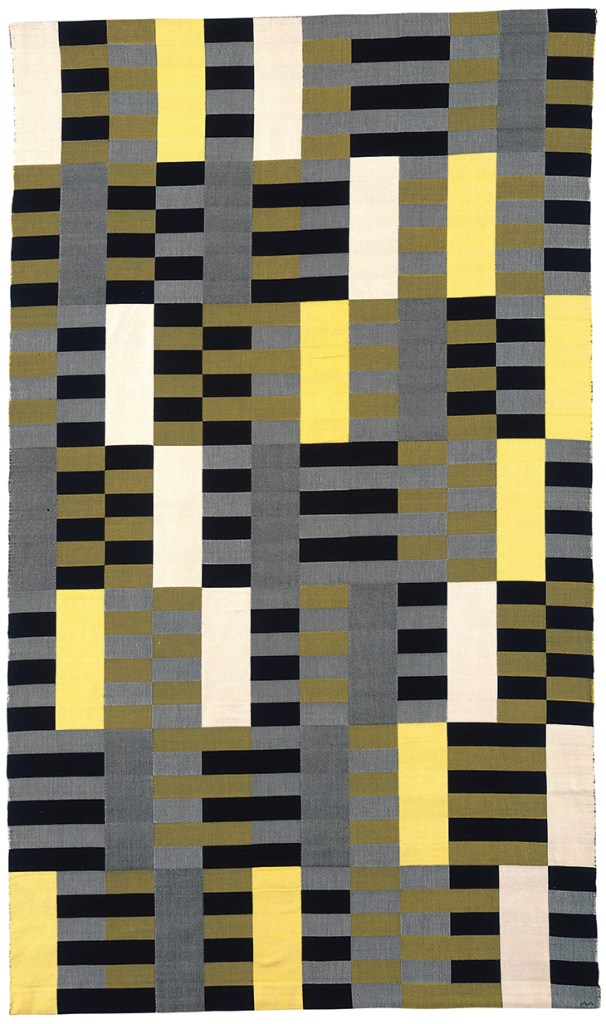
Black White Yellow (1926) (rewoven by Gunta Stölzl in 1965), Anni Albers. Metropolitan Museum of Art, New York. © 2018 The Josef and Anni Albers Foundation/Artists Rights Society (ARS), New York/DACS, London
Because the grid emerged as a crucial component of early modernism, it might seem that weaving, based on a vertical warp and a horizontal weft, was a modernist medium almost by accident, the result of the technique itself. But, of course, over the centuries weaving had embraced every kind of figuration and decorativeness, particularly in the form of tapestry with its discontinuous wefts and, from the 19th century, through the use of Jacquard looms. At the Bauhaus, and in the radical workshops run by Ethel Mairet and Elizabeth Peacock in England, by Elsa Gullberg in Sweden, and in the workshop of the French firm Rodier, weavers independently and collectively abandoned representation, concentrating on abstract colour, yarn texture and structure, and not shying from new materials like cellophane. As with other areas of modernism, radical weavers looked back in order to look forward, studying the distant present of peasant or vernacular weaving from remoter parts of Europe, or investigating ancient Egyptian linens or pre-Columbian Andean textiles, the latter regarded by figures like Mairet as being technically among the most sophisticated weavings ever created.
The Düsseldorf/Tate show opens with what survives of Albers’ Bauhaus work – her well-known abstract double or treble cloth wall-hangings, her gouache drawings for similar abstract designs, and industrial applications of weaving such as her wall covering for Hannes Meyer’s Trade Union School auditorium near Berlin at Bernau, complete with a diagram by Zeiss-Ikon A.G. that analyses the material’s light-reflective and sound-absorbing qualities. In 1925, while still a student, she married Josef Albers, a former Bauhaus student and a teacher at the school. Arguably, of all her Bauhaus weaving peers, Anni Albers was the lucky one. In 1933, after a couple of years of freelance work, she and Josef were invited to the United States to teach at the newly formed Black Mountain College in North Carolina, leaving Germany the year that Hitler took power. By contrast Gunta Stölzl left the Bauhaus in 1931 and subsequently struggled to make a living in a difficult political climate, eventually running a weaving mill in Switzerland. Otti Berger, refused a visa to the United States in 1938, died in a concentration camp. Others, like Margaret Leischner, joined the artistic diaspora, fleeing abroad to find work as teachers or within industry.
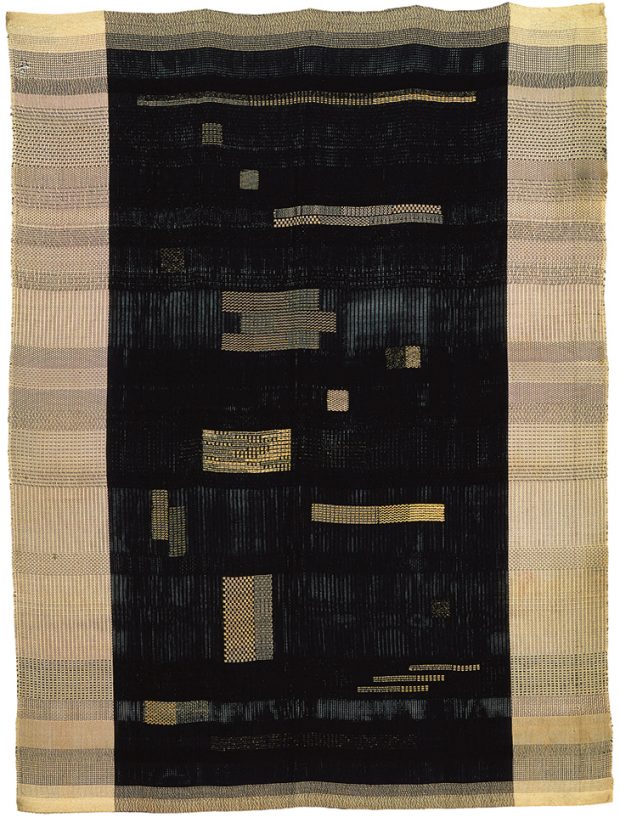
Ancient Writing (1936), Anni Albers. Smithsonian Art Museum, Washington, D.C. © 2018 Josef and Anni Albers Foundation/Artists Rights Society (ARS), New York/DACS, London
As her husband became an increasingly respected teacher in North America, Albers had freedom to think, make and write. Although she and her peers at the Bauhaus had been aware of ancient Andean weavings, she was able to study them in depth on visits to Peru and Chile in the 1950s. Still earlier she was inspired by visits to the tombs of Monte Albán in Mexico, which led to her first named wall hanging of 1936. And in North America she was able to concentrate on a sequence of similar non-functional weavings – ‘pictorial weavings’ – mounted and framed like graphics or paintings. These are well represented in the exhibition and are of great beauty, colouristically subtle, employing fancy yarns, bunched warps, leno weaves and floating wefts. By the mid 1950s they became markedly smaller than her Bauhaus wall-hangings, suggesting a certain scaling back on Albers’ part. After the couple moved to New Haven in 1950, Josef Albers having become chair of the department of design at Yale University, Albers took to using a table loom rather than the large countermarch looms she had used at the Bauhaus and at Black Mountain College. That would explain why in the 1960s she asked Gunta Stölzl to reweave some of her lost wall-hangings made at the Bauhaus. Her increasingly crippled state, caused by an inherited deformity of the arch of her foot, would have made using the foot pedals of large looms difficult. There may have been other reasons for downsizing. Charles Sawyer, dean of the Yale School of Art in the 1950s, recalled, ‘In all candour I don’t think that Josef was entirely sympathetic to her concerns. And I think he should have been.’
If Albers’ pictorial weavings are at the heart of the current exhibition, there is also a fine selection of her post-war samples and yardage for industrial production, and of her room dividers, a number made for her landmark one-person show at the Museum of Modern Art in New York in 1949, which focused on her functional projects. Then there is the wonderfully witty wartime jewellery she created with her student Alex Reed at Black Mountain College. Made out of everyday materials such as a sink drainer, a plug chain, paper clips and washers, Albers said that these necklaces were inspired by the mix of materials in objects excavated at Monte Albán that combined ‘simple sea-shells’ with pearl, jade, rock crystal and gold. For her these necklaces had a spiritual value, reminding us of ‘the merely transient value we attach to things, though we believe them to be permanent’. Albers’ desire to get her students at Black Mountain to begin ‘on absolute zero, in the desert’, as she told an interviewer, was part of this spirituality. Was it born out of the shock of permanent exile? All her training at the Bauhaus had prepared her for such an eventuality. The jewellery made at Black Mountain and her and Josef’s collections of what she called ‘small-great’ pre-Columbian objects have been singled out by Anni Albers’ great nephew, the literary critic Christopher Benfey who has written on the theme of exile in her work. Her pre-Columbian collection was portable, potentially nomadic, being groups of objects that ‘can be held in two hands’.
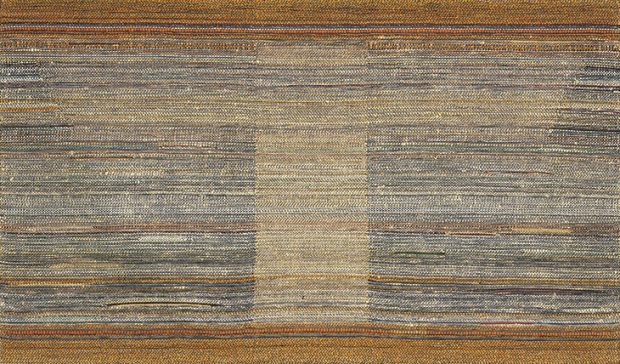
La Luz I (1947), Anni Albers. The Josef and Anni Albers Foundation, Bethany, Connecticut. © 2018 Josef and Anni Albers Foundation/Artists Rights Society (ARS), New York/DACS, London
The same might be said of Albers’ collection of historic weavings. She always emphasised the nomadic nature of textiles. In a world where ‘we move more often and always faster from place to place […] it may be that we will take along a woven picture as a portable mural, something that can be rolled up for transport’. The exhibition also includes a selection of the historic weavings that she actually collected or that inspired her – from Kuba cloth from the Congo to ancient Peruvian tapestries. Her fondness for tapestry, essentially a pictorial art form, may seem curious in the context of her modernism, but her preference was for these Peruvian fragments whose step-forms and zigzags particularly attracted her. They were later to translate into her magnificent prints and into a lost tapestry that she designed in 1967 for the Camino Real Hotel in Mexico City. Examples of her collection of textiles were illustrated in her book On Weaving (1965) and a startlingly beautiful part of the exhibition includes original plates from the book’s first edition.
Anni Albers’ reputation within a populated world of textile endeavour has remained high. During her lifetime, beginning with her one-person show at MoMA, Albers had a remarkable number of solo exhibitions in North America and Europe, culminating in 1986 with ‘The Woven and Graphic Art of Anni Albers’ at the Renwick Gallery, Washington, some 16 years after she had given up weaving entirely. Yet in North America she was not the leader of a radical textile movement – that role was taken by the Fiber Art Movement of the 1960s and ’70s, which developed independently, even if the magus weaver Sheila Hicks had a brief encounter with Anni when she was taught at Yale in the mid to late 1950s by Josef. But Hicks discovered South American weaving and the historic Andean textiles through attending lectures by George Kubler, reading Raoul D’Harcourt’s Textiles of Ancient Peru (1934) and being tutored by the archaeologist Junius Bird. In the 1960s Hicks and figures such as Lenore Tawney and Claire Zeisler took interest in archaic textiles in new directions, often relinquishing the loom altogether, working on a monumental scale, taking skeins of yarn to make warp-dominated work that was wrapped, bound, hung and piled. Albers had doubts about these developments, warning in On Weaving that ‘Our playfulness today often loses its sense of direction […] Limitlessness leads to nothing but formlessness, a melting into nowhere.’ For Jack Lenor Larsen and Mildred Constantine, writing in their seminal book The Art Fabric: Mainstream (1981), Albers remained the ‘arch-classicist’ whose ‘dominant concern has always been the interaction between medium and process that results in form’.
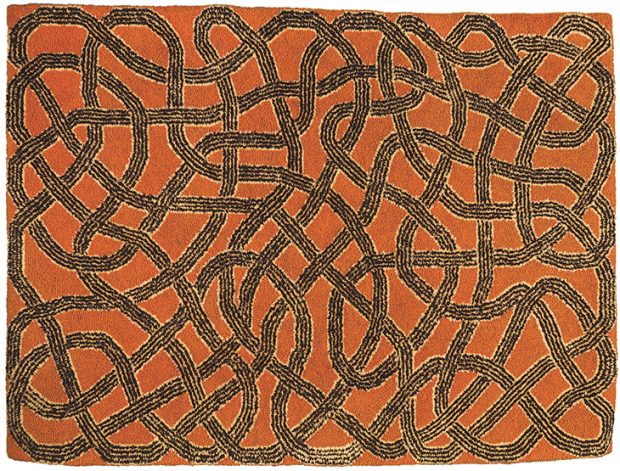
Rug (1959), designed by Anni Albers and executed by Gloria Finn Dale. Herbert F. Johnson Museum of Art, Cornell University. © 2018 Josef and Anni Albers Foundation/Artists Rights Society (ARS), New York/DACS, London
With the support of the Josef and Anni Albers Foundation Albers’ fame has, however, continued to grow, aided by the exhibition ‘Anni Albers’ at the Guggenheim Museum in 1999 and ‘Anni Albers: Touching Vision’ at the Guggenheim Bilbao in 2017. Many exhibitions of contemporary art have also taken her work as a reference point, from Duro Olowu’s ‘Making & Unmaking’ at Camden Arts Centre in 2016 to the touring exhibition of contemporary art put on in 2017 by ifa, the German equivalent of the British Council, entitled ‘The Event of a Thread: Global Narratives in Textiles’. In addition there are many individual artists who attest to her influence. These include Beryl Korot, who is fascinated by Albers’ draft notations, Leonor Antunes, who pays tribute to a woman working in the shadow of a more famous husband, and Ann Hamilton, whose performance piece The event of a thread (2012) was inspired by Albers’ preface to On Weaving, passages from which were recited during the piece.
But the way in which Albers is usually understood is rather particular. Most strikingly, the current exhibition and its catalogue appear to be characterised by a kind of wonderment; weaving is seen as something unfamiliar. Briony Fer, in a fine article in the catalogue, argues that ‘a handloom is hardly the most obvious choice for an artist of the historical avant-garde’ and elsewhere she notes the ‘use of yarn, the handmade, and a slow laborious process that are aspects of weaving’. Weaving is certainly very different from painting, even if Albers took to presenting her work in ways that downplayed the diaphanous quality of woven textile and the way in which pattern and colour are intrinsic rather than on the surface, as with printed textile or with painting. But like all the recent monographic shows on Anni Albers, the exhibition has not been organised with a primary focus on hand weaving as a craft. On one level this gives an exciting intellectual freshness to the show, even if one might wish for more technical detail when it comes to labelling. Although weaving comes with all kinds of mythic associations, it is ultimately grounded in materials and their manipulation. That weavers have special insights into the poetic potential of the practical work of weaving is made clear in work of the young textile artist Ismini Samanidou. She has gone deep into Albers’ practice, reconstructing one of her table looms found in storage at the Josef and Anni Albers Foundation while on a residency there. Simon Barker’s haunting film Warping Threading Weaving Drawing (2014–15) shows Samanidou at work and may be an unexpected highlight of the show.
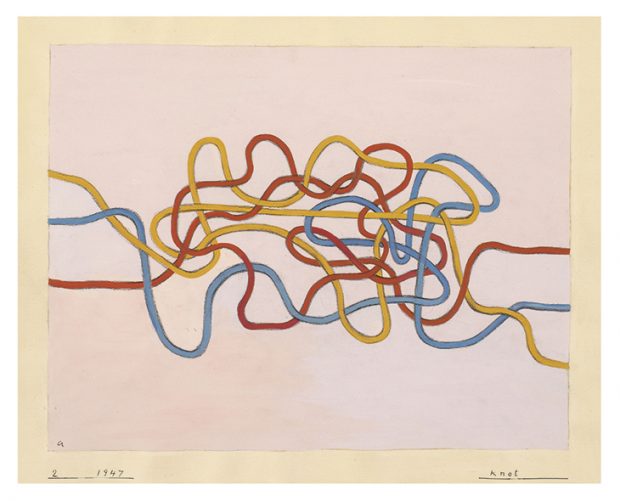
Knot (1947), Anni Albers. The Josef and Anni Albers Foundation, Bethany, Connecticut. © 2018 Josef and Anni Albers Foundation/Artists Rights Society (ARS), New York/DACS, London
Some of the generalised wonderment that surrounds perceptions of Anni Albers flows from her own writing. On Weaving, rather like Bernard Leach’s A Potter’s Book, has a luminous simplicity and clarity. Neither book was written for readers deeply immersed in weaving or pottery, whether as art, craft or design for manufacture. Rather Albers and Leach reached out to a wider audience, setting out universal principles. These were not how-to-do-it books. The great Anglo-Swiss textile designer Marianne Straub noted in an admiring review that Albers’ book had ‘distinction’ and avoided ‘details that lie in the province of specialists’. On Weaving, along with her equally remarkable book On Designing (1959) and her Selected Writings on Design (2001; edited by Brenda Danilowitz), anticipate more recent writing on the semantics of text and textile, which draws on literary theory, psychoanalysis and gender and identity politics, with thread operating as a carrier of meaning. Albers got there first. And by illustrating images that most weavers would regard as quotidian in On Weaving, such as the chequer-board graphics of weave notations, she gave the art world space to make links with other forms of abstraction.
By writing with no assumption of a craft audience, Albers was able to announce that weaving was ‘the event of a thread’ and ‘a method of forming a pliable plane of threads by interlacing them rectangularly’, thus allowing all of us to look at the discipline anew. The final puzzle caught by the show is Albers’ abandonment of weaving altogether by 1970 in favour of printmaking. She is often quoted as saying: ‘I find that, when the work is made with threads, it’s considered a craft; when it’s on paper, it’s considered art.’ It must have been more complicated than mere status. She always drew beautifully long before she turned to prints. Her seductive sequence of drawings and gouaches of knots and entangled threads of the 1940s and ’50s form a particularly fascinating section of the exhibition. The turn to printmaking, at which she was to excel, might best be read as another fresh start, answering a modernist need to begin again ‘on absolute zero, in the desert’.
‘Anni Albers’ is at Tate Modern, London, until 27 January 2019.
From the October 2018 issue of Apollo. Preview and subscribe here.
Unlimited access from just $16 every 3 months
Subscribe to get unlimited and exclusive access to the top art stories, interviews and exhibition reviews.

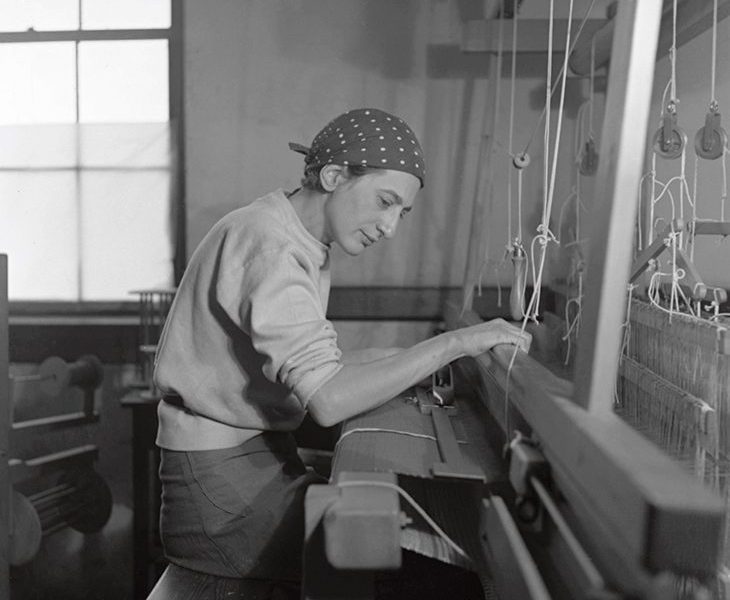
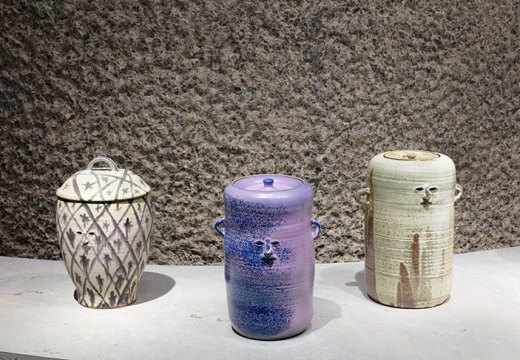
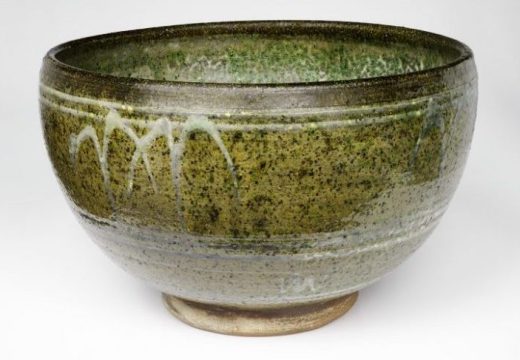
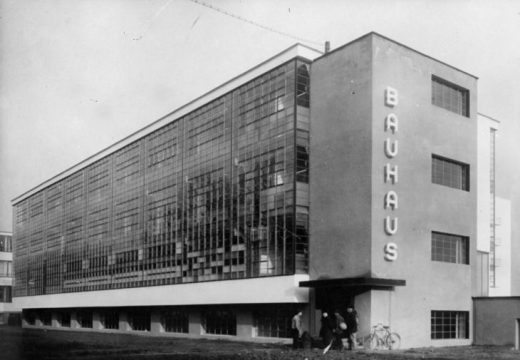









![Masterpiece [Re]discovery 2022. Photo: Ben Fisher Photography, courtesy of Masterpiece London](http://www.apollo-magazine.com/wp-content/uploads/2022/07/MPL2022_4263.jpg)
It’s time for the government of London to return to its rightful home